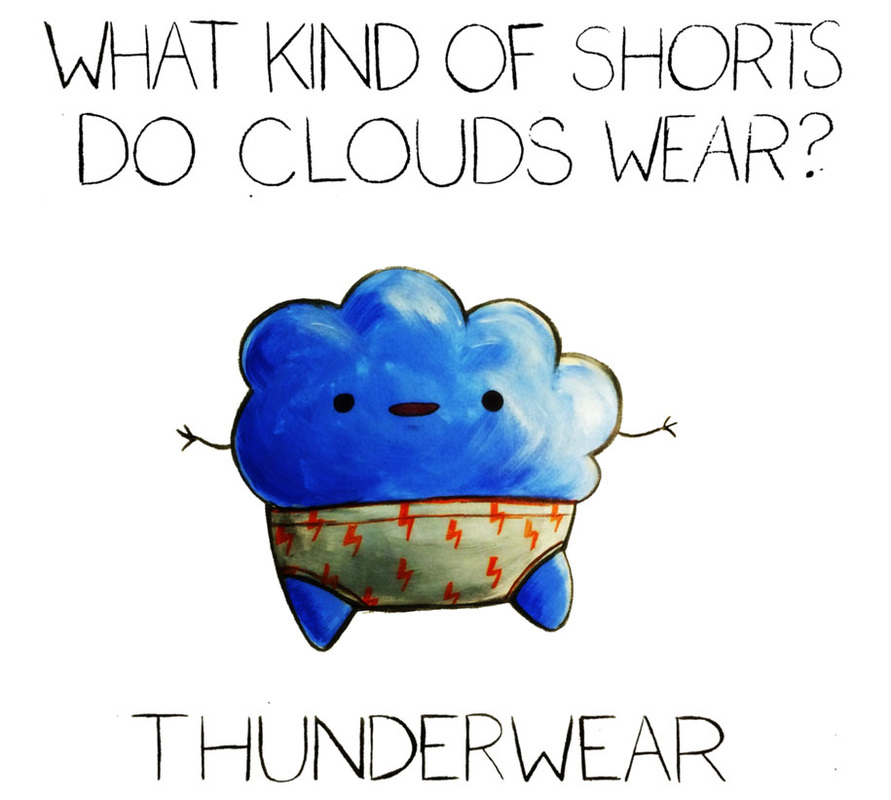Please share!
I recently sent my friend a joke and her response was...
And, it totally was. But, guess what? Dad jokes are all the rage. They are good for your kid's reading.
Reading is a complex cognitive process. There are a lot of pieces that are moving in concert to make sure reading can happen. But, our overall goal remains the same - we want to understand the world around us and when we can't experience it firsthand, we want to be able to read about it.
Understanding the world through reading requires that we are able to read fluently.
Let me break that down. When adults describe someone as fluent in a subject, we mean they can function flawlessly and without hiccups. In reading, it means that also, and specifically, reading with speed, accuracy...automaticity. Good readers do it automatically.
Fluency also includes your tempo, emphasis, inflection, tone and delivery. Essentially, you want your internal reading voice to sound like your out-loud speaking voice. Reading language should mirror oral language. This is called prosody.
Prosody is a tough nut to crack because it can't be measured like reading speed and accuracy, so it often is ignored on standard reading measures administered in the classroom. Or it's left subjectively up to the person administering the reading benchmark.
Understanding the world through reading requires that we are able to read fluently.
Let me break that down. When adults describe someone as fluent in a subject, we mean they can function flawlessly and without hiccups. In reading, it means that also, and specifically, reading with speed, accuracy...automaticity. Good readers do it automatically.
Fluency also includes your tempo, emphasis, inflection, tone and delivery. Essentially, you want your internal reading voice to sound like your out-loud speaking voice. Reading language should mirror oral language. This is called prosody.
Prosody is a tough nut to crack because it can't be measured like reading speed and accuracy, so it often is ignored on standard reading measures administered in the classroom. Or it's left subjectively up to the person administering the reading benchmark.
The scale by which we judge fluent readers in prosody looks like this:
"Reads primarily in larger, meaningful phrase groups. Although some regressions, repetitions, and deviations from text may be present, these do not appear to detract from the overall structure of the story. Preservation of the author’s syntax is consistent. Some or most of the story is read with expressive interpretation."
National Assessment of Educational Progress Fluency Scale
All that to say, fluency includes reading expressively.
|
With only speed and accuracy, we'd sound like robots. Furthermore, readers who are only focused on speed and accuracy oftentimes miscomprehend the story because they are so worried about reading it "right". They confuse word groups and miss meaning. Or, they can be choppy readers and that also makes it hard to follow appropriate word groups for meaning. |
Prosody is what makes our speech relatable in oral language. It's what makes a story memorable. It's exactly what makes a joke funny.
Jokes are all about delivery. A good joke-teller (and read story-teller too) leaves appropriate wait time at punctuation. They emphasize the right words to maximize the punchline. Great comedians phrase their words just right for laughter.
Practicing jokes can make your reader more fluent overall in their reading and you have the added benefit that telling jokes is fun.
And this is the motivator for many kids.
Jokes have other reading benefits, beyond fluency. Aside from practicing prosody, kids also learn new words. They pick up on homophones and puns. You can talk about double meanings of words or why a joke is punny and kids will start to learn sophisticated language.
There are a few practical ways to weave jokes into your everyday routine:
Telling jokes to your kids is a great way to model delivery, inflection, appropriate wait time - all the elements of prosody. The more jokes they hear you tell, the better they will want to be at telling them too.
Tell jokes! It's for your kid's reading benefit and it's fun.
Enjoy!
P.S. Here's a tidbit. You can also find lots of jokes in kid movies. Lily's favorite? It's in Finding Nemo when the octopus gets scared and yells, "Awe, you guys made me ink!"
Jokes are all about delivery. A good joke-teller (and read story-teller too) leaves appropriate wait time at punctuation. They emphasize the right words to maximize the punchline. Great comedians phrase their words just right for laughter.
Practicing jokes can make your reader more fluent overall in their reading and you have the added benefit that telling jokes is fun.
And this is the motivator for many kids.
Jokes have other reading benefits, beyond fluency. Aside from practicing prosody, kids also learn new words. They pick up on homophones and puns. You can talk about double meanings of words or why a joke is punny and kids will start to learn sophisticated language.
There are a few practical ways to weave jokes into your everyday routine:
- Leave cartoons or quick jokes on the table for breakfast in the morning for your kids to find
- Get a joke book to use on on your kids
- Get a joke book for your kids to use on you!
- Read comic strips from, like Dennis the Menace
- Read Amelia Bedelia books
Telling jokes to your kids is a great way to model delivery, inflection, appropriate wait time - all the elements of prosody. The more jokes they hear you tell, the better they will want to be at telling them too.
Tell jokes! It's for your kid's reading benefit and it's fun.
Enjoy!
P.S. Here's a tidbit. You can also find lots of jokes in kid movies. Lily's favorite? It's in Finding Nemo when the octopus gets scared and yells, "Awe, you guys made me ink!"








